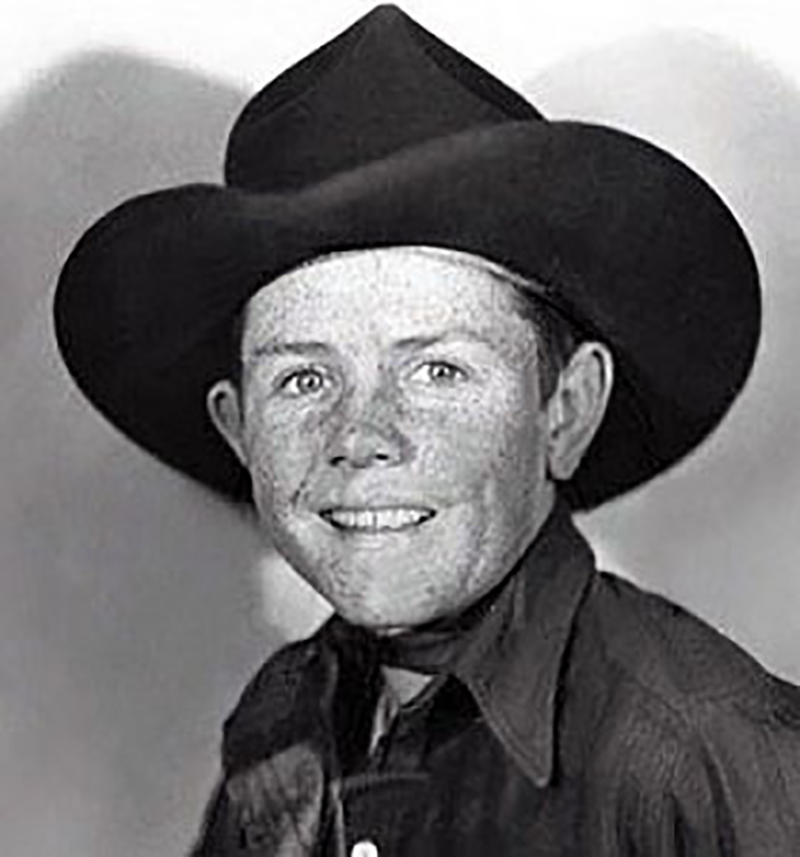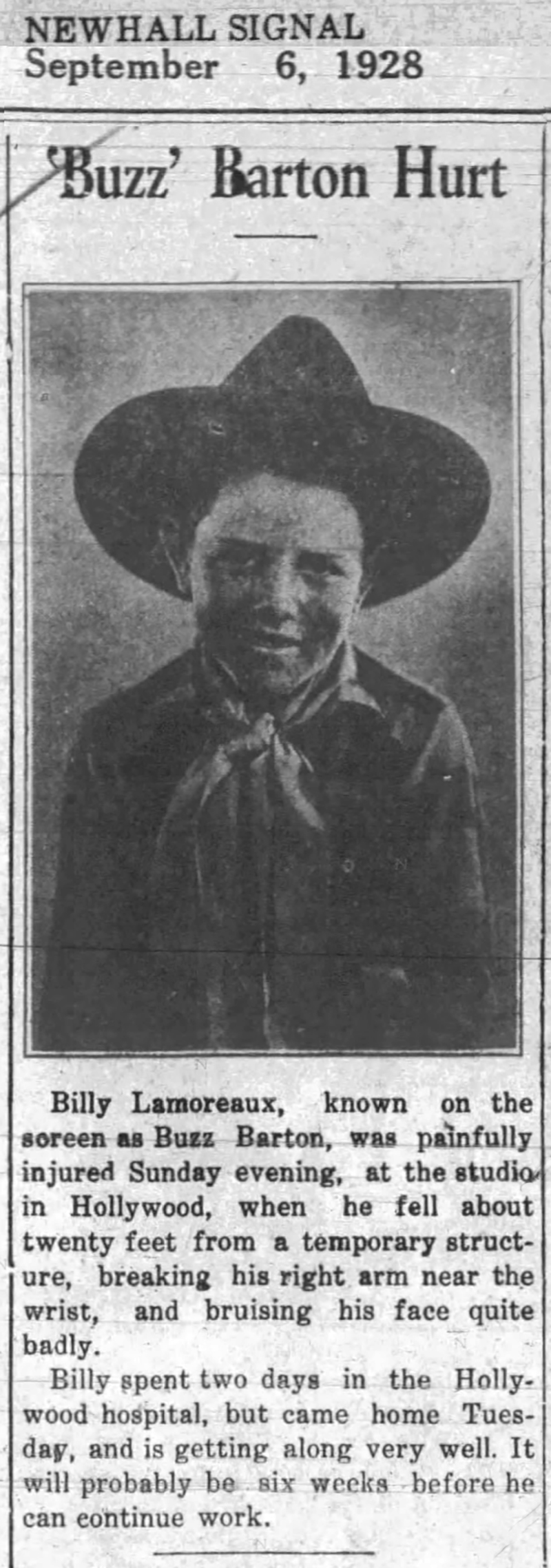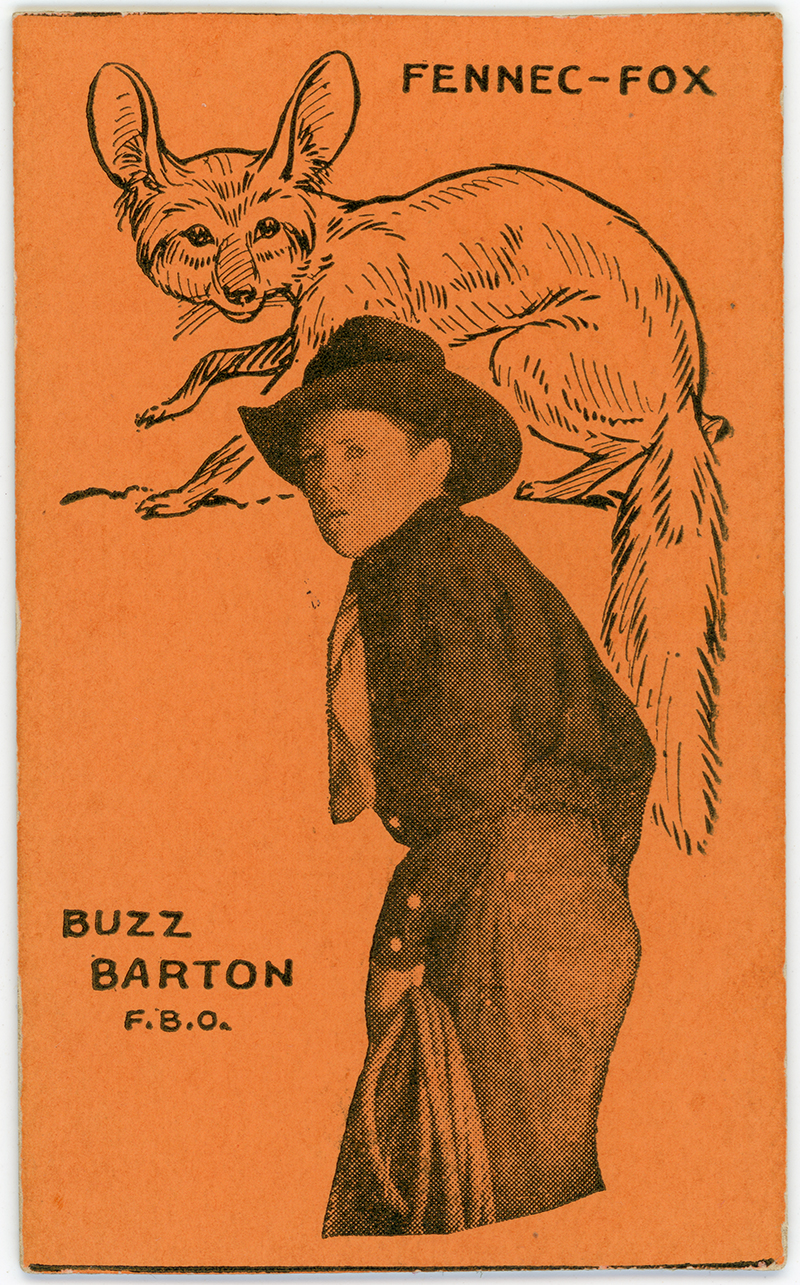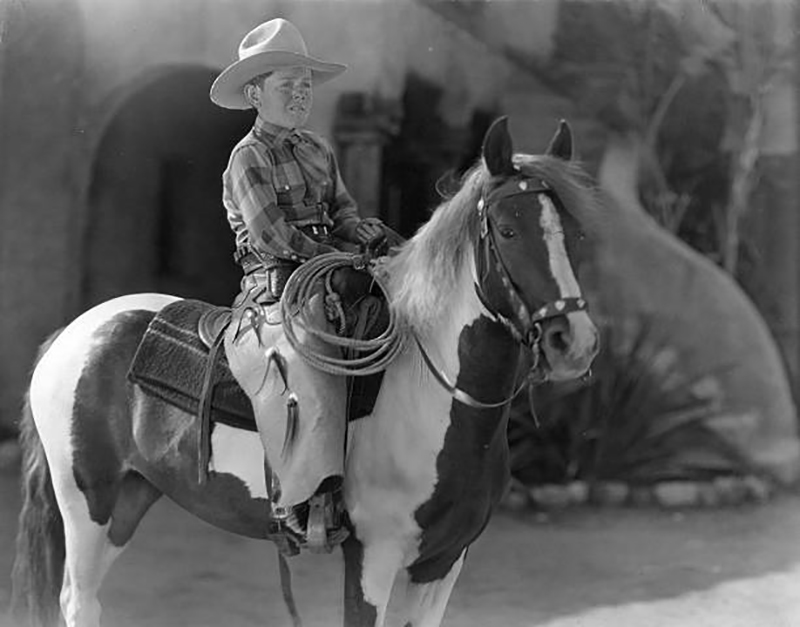|
 William Andrew "Red" Lamoreaux was born September 3, 1913, in Gallatin, Missouri. He was just a boy when his family moved to Newhall, where he met Western actor Jack Perrin and stockman Andy Jauregui. One or the other of them, depending on the source (Jauregui locally, Perrin elsewhere), got him into the movies at age 11.
William Andrew "Red" Lamoreaux was born September 3, 1913, in Gallatin, Missouri. He was just a boy when his family moved to Newhall, where he met Western actor Jack Perrin and stockman Andy Jauregui. One or the other of them, depending on the source (Jauregui locally, Perrin elsewhere), got him into the movies at age 11.
His first screen appearance was a small, uncredited role in the Jack Perrin vehicle, "The Knockout Kid." It premiered September 1, 1925, just shy of Lamoreaux's 12th birthday. It was produced by W. Ray Johnston, who would go on to become one half of the Monogram operation with Trem Carr and would eventually become a Newhall resident himself.
Lamoreaux's next appearance earned him a screen credit as Billy Lamar, the name Johnston's company, Rayart, gave him. His name changed when he left Rayart in 1927 for (JFK's father) Joseph P. Kennedy's company, FBO, where director Louis King gave him the title role in "The Boy Rider." Now this freckle-faced kid was "Buzz Barton," and the name stuck. Adept with a rope, he lived up to his nickname, "The Boy Wonder of Westerns."
 Off screen, a tutor provided by the studios helped young Lamoreaux keep up with his studies when he was away on location, and he attended Newhall School when he wasn't. Apparently he was treated no differently from any other Newhall kid, even when he appeared in school plays. The local newspaper paid him no special attention when he was cast as an extra in a performance of "Robin Hood" in the school auditorium in 1926 (he played the hobby horse); again in 1929, at the height of his popularity, he was cast as an extra (an elf) when fourth, fifth and sixth graders performed an operetta. In neither instance was his screen name used in the paper. (Curiously, one of his schoolmates was named Jack Barton; we don't know if there is any significance to the coincidence.)
Off screen, a tutor provided by the studios helped young Lamoreaux keep up with his studies when he was away on location, and he attended Newhall School when he wasn't. Apparently he was treated no differently from any other Newhall kid, even when he appeared in school plays. The local newspaper paid him no special attention when he was cast as an extra in a performance of "Robin Hood" in the school auditorium in 1926 (he played the hobby horse); again in 1929, at the height of his popularity, he was cast as an extra (an elf) when fourth, fifth and sixth graders performed an operetta. In neither instance was his screen name used in the paper. (Curiously, one of his schoolmates was named Jack Barton; we don't know if there is any significance to the coincidence.)

Unless you're Mickey Rooney, being typecast as a youth doesn't last. Puberty took its toll, and the advent of "talkies" hastened the process. Lamoreaux might have gotten away with looking like a young teenager for a few more years — he stopped growing at 5-foot-2 — but he didn't sound like one. The roles got harder to come by.
He played supporting roles in the late 1920s and '30s and even co-starred opposite Yakima Canutt in 1930's "Canyon Hawks," which used Mystery Mesa in Saugus as a filming location. That same year he co-starred with Rin-Tin-Tin in the 12-chapter Mascot serial, "The Lone Defender." He was still popular enough that the Daisy Co. marketed a Buzz Barton Special Daisy Air Rifle, as it did with Buck Jones.
Lamoreaux would appear in dozens more B-westerns ... with fewer and fewer screen credits as time wore on ... many of which were filmed in Santa Clarita Valley, such as 1935's "Powdersmoke Range" with Harry Carey and Hoot Gibson.
When the United States entered World War II, Lamoreaux traded in his spurs for a sailor's uniform. He was a member of the crew of the USS Missouri when Japanese goverment officials signed the surrender documents on the deck of the ship September 2, 1945.
On June 22, 1947, he married Thelma Doyle, and Saugus denizen William G. Bonelli put him to work running one of his ranches in Arizona. The couple returned in 1956 with their daughter Linda and moved into a one-bedroom home in Newhall at 24753 Valley Street. He worked as a top wrangler in the movies at the Randall Ranch in Newhall until he retired for good in 1979.
Lamoreaux moved to the San Fernando Valley, where he died November 20, 1980. His body was returned to Newhall for burial in the Garden of Memory at Eternal Valley Cemetery.
| 




